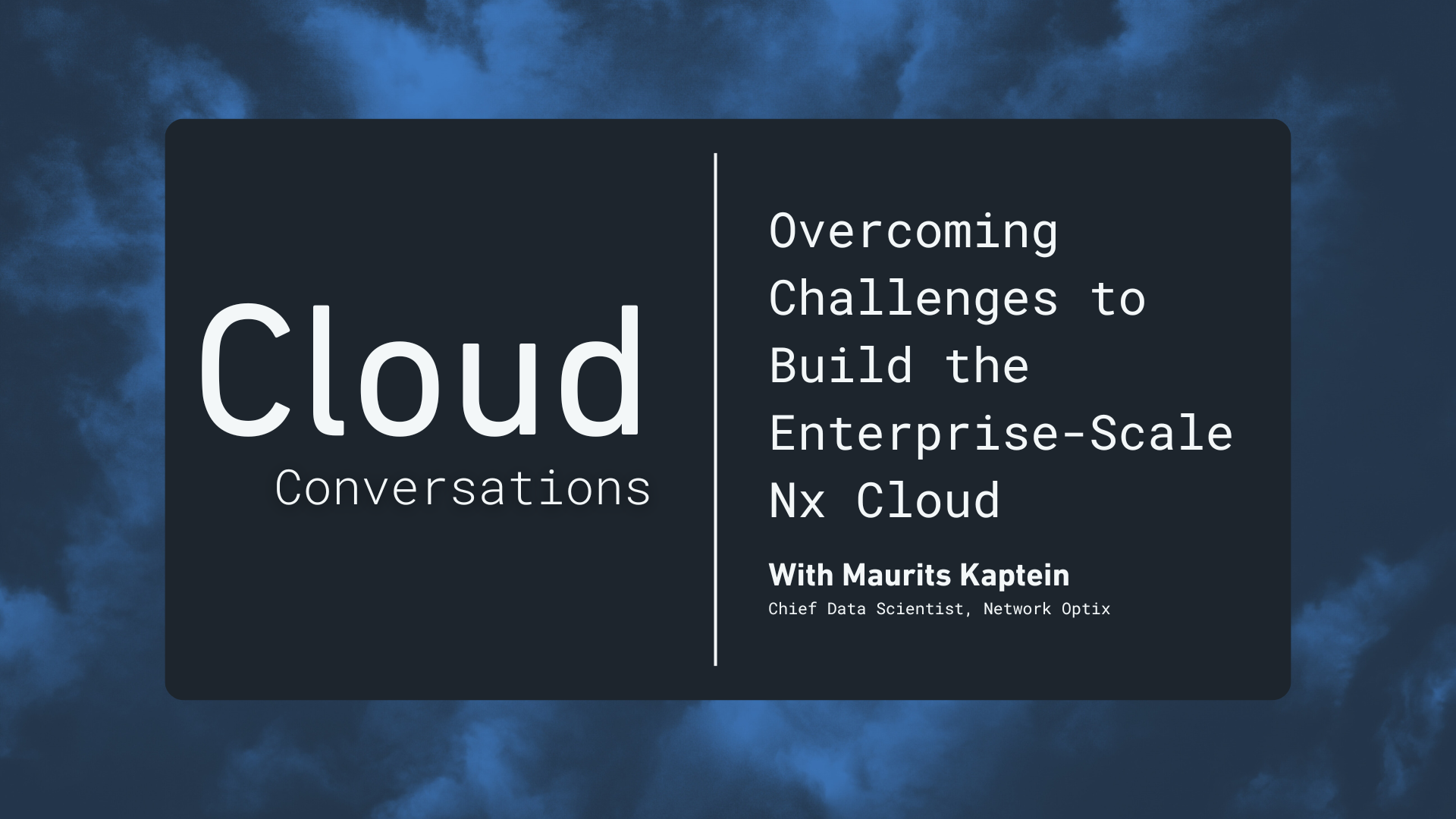Cloud Conversations: Overcoming Challenges to Build the Enterprise-Scale Nx Cloud
As Network Optix grows, so does our commitment to maintaining a strong, scalable cloud infrastructure that meets the demands of an increasingly dynamic user base. Earlier this year, Nx Cloud faced scalability challenges as the number of systems and volume of cloud requests surged. In response, we prioritized a series of improvements and, with the recent release of Gen 6 Enterprise, we’re excited to share how we’re optimizing Nx Cloud to support this growing demand now and into the future.
To delve into these changes, Dmitry Sidorenko, our Team Lead for Cloud, and Maurits Kaptein, Chief Data Scientist, share insights into what led to these earlier issues, the improvements we’ve made, and our roadmap for the future.
This discussion is a follow-up to our earlier conversation with Tagir Gadelshin at the beginning of this year.
The Conversation: Scaling Nx Cloud
Let’s start from the beginning. What was wrong and what is the root cause?
Dmitry: “Well, earlier this year, some of our customers experienced short-term disruptions related to various functionalities of our cloud. The root cause of these issues was simply the rapid success and expansion of our products. We’ve experienced significant growth in the number of systems deployed in the field, which means a lot more systems connected to our cloud. On top of that, the ways people are using our software have also expanded — from simple archiving to powering advanced AI solutions. This growth has led to each system making more requests to our cloud. Multiply that by the increase in the number of systems, and the load has increased exponentially."
"The increased number of requests led to a few hiccups because each request needed secure authentication and authorization, which became a bottleneck. At a high level, our backend has various services and databases, but much of our traffic needs to go through authentication and authorization services, which put a strain on both the service and the database layers. Even though we’ve designed our systems to be extremely reliable and fast (thanks to smart caching and other techniques), the bottleneck from this increased load showed the limits of our current design, which wasn't as easily scalable horizontally."
Maurits: "Many of the measures described by Tagir earlier—if you’ll allow me to make an analogy to water management…" (Maurits, who was born and raised in the Netherlands on a plain below sea level, has a fondness for water management analogies) “…were like setting up flood monitoring and response teams. If water levels are rising, the first step is to monitor the situation properly. The second is to deploy teams with sandbags to prevent unexpected floods. That’s what we did earlier this year: continuous monitoring and effective response. We plugged the holes."
Where are we now?
Maurits: “Well, allow me to continue my water management analogy. While active monitoring and rapid response teams are great, if you know the water will keep rising, you need more fundamental measures to prevent future flooding. This is exactly what we did over recent months…”
Dmitry: “To bring it back to our actual cloud, we did take a number of future-proof measures. Essentially, we tackled two main areas: First, with the 6.0 release of the media server, we bundled data sent to our cloud more efficiently, therefore reducing the number of cloud calls each system makes by an order of magnitude. Second, we improved how our cloud processes incoming data internally. These two measures helped alleviate bottlenecks in our authentication and authorization services, as well as in other related functions. Additionally, we reduced the bottleneck between the primary service and the underlying database by improving our synchronization process…"
Maurits: "In other words, we built higher dikes and routed the water more efficiently!”
Dmitry: "Uh... yeah. Right now, both at the service and database levels, we’re operating at about one-tenth of our total capacity. So we’ve significantly increased our scalability and are well-prepared for the foreseeable future. With the monitoring and rapid response systems in place, we haven’t seen any recent cloud issues and are ready for the enterprise scale."
Maurits: “We're keeping our feet dry!”
Where are we heading?
Dmitry: "You seem to have a hard time shedding the water analogy…”
"Anyway, we're planning even more improvements for the future. At it's core, we’re accelerating the modularization of our core cloud services. We’re also changing our caching approach. Together, these changes will make automatic horizontal and geographical scaling of all of our services and database systems even easier. Essentially, we’re splitting up some of the core services into multiple components, each managed and scaled independently. These changes will roll out over the coming months, and while users won't notice anything in their day-to-day experience, they are key steps toward ensuring our infrastructure is ready not just for the next few years, but for the next decade."
Maurits: "To conclude, the efforts never stop. We foresee significant growth in the number of systems and the overall usage over the coming years. With the release of Gen 6 Enterprise and additions like Nx Maps and Nx AI Manager, we know that demand on our cloud will keep growing. So, to add just one more water management analogy: we're digging deeper canals, creating overflow areas, and routing the water more efficiently to prepare for the next decade."
Geared for The Future
We hope this conversation has offered valuable insight into the work we've done to scale Nx Cloud for Gen 6 Enterprise and beyond. With continuous improvements, proactive monitoring, and a forward-thinking approach to scalability, Nx Cloud is fully equipped to meet the demands of modern enterprise operations now and into the future.
If you have any questions about Nx Cloud or its infrastructure, feel free to reach out!
Want to explore how Gen 6 Enterprise can optimize your large-scale operations? Join our waitlist to unlock the potential of a fully integrated, infinitely scalable intelligent video solution.


